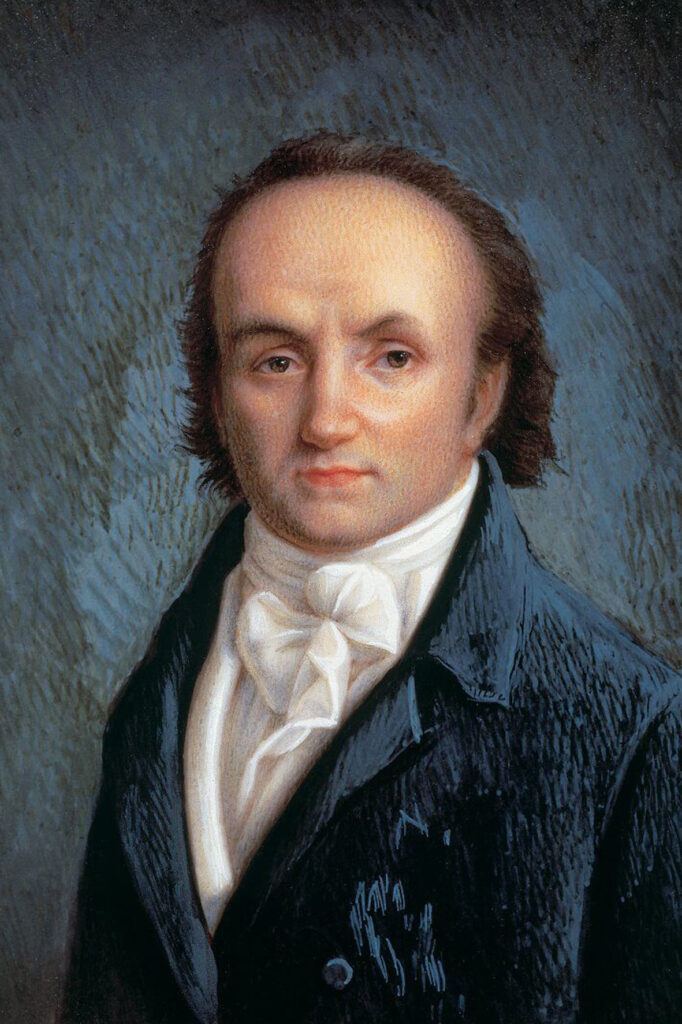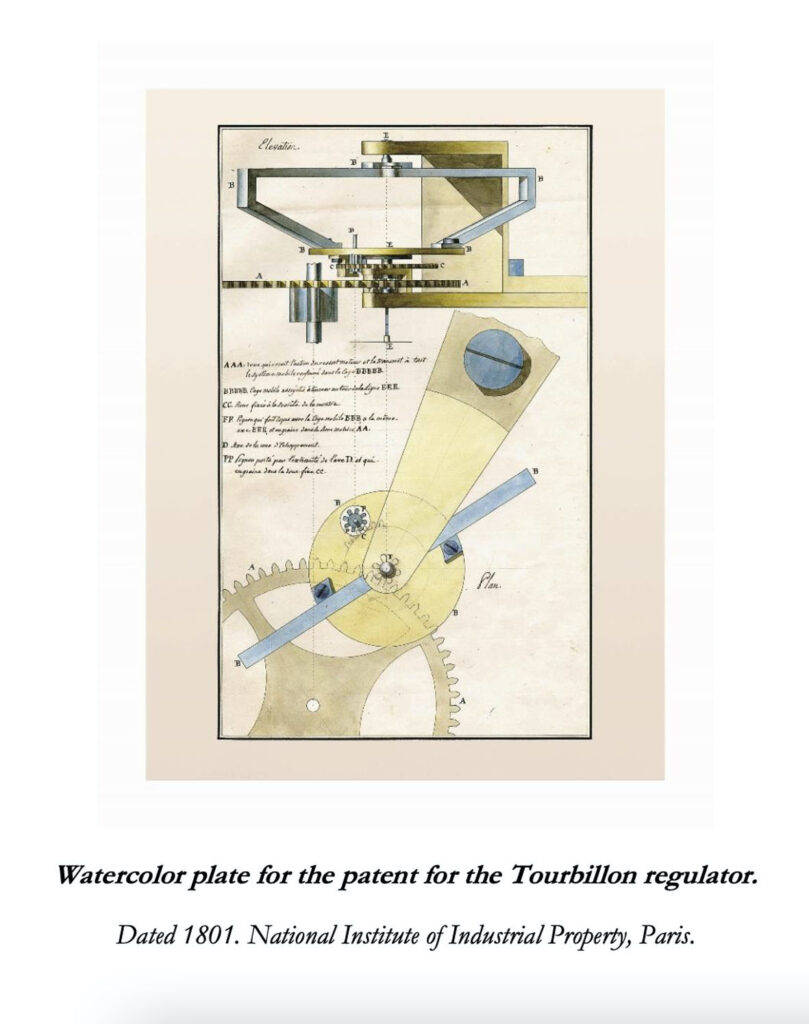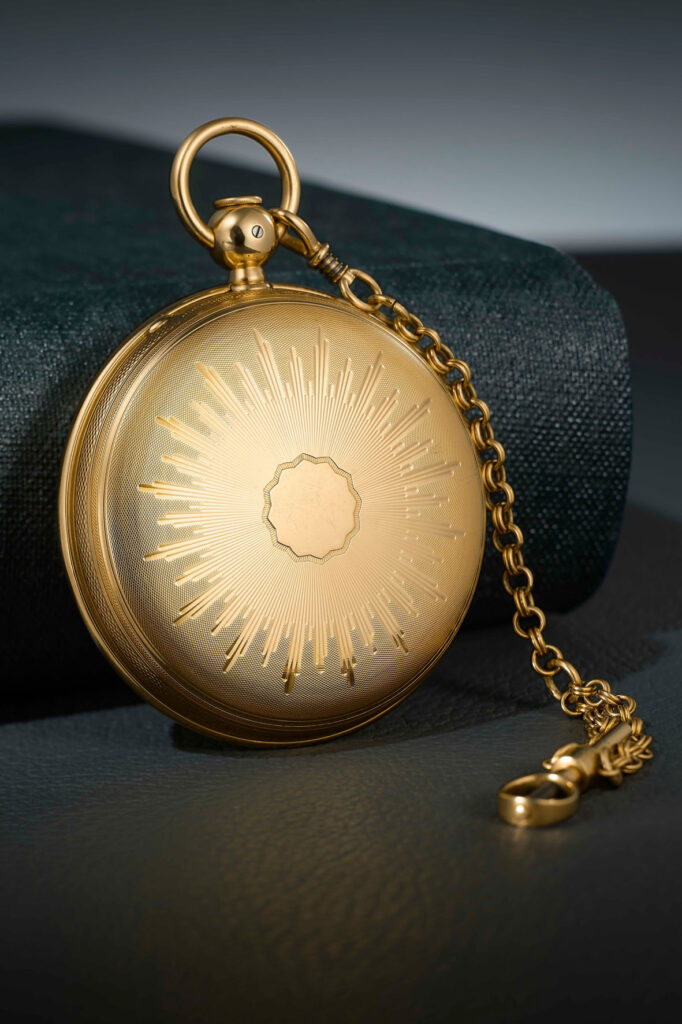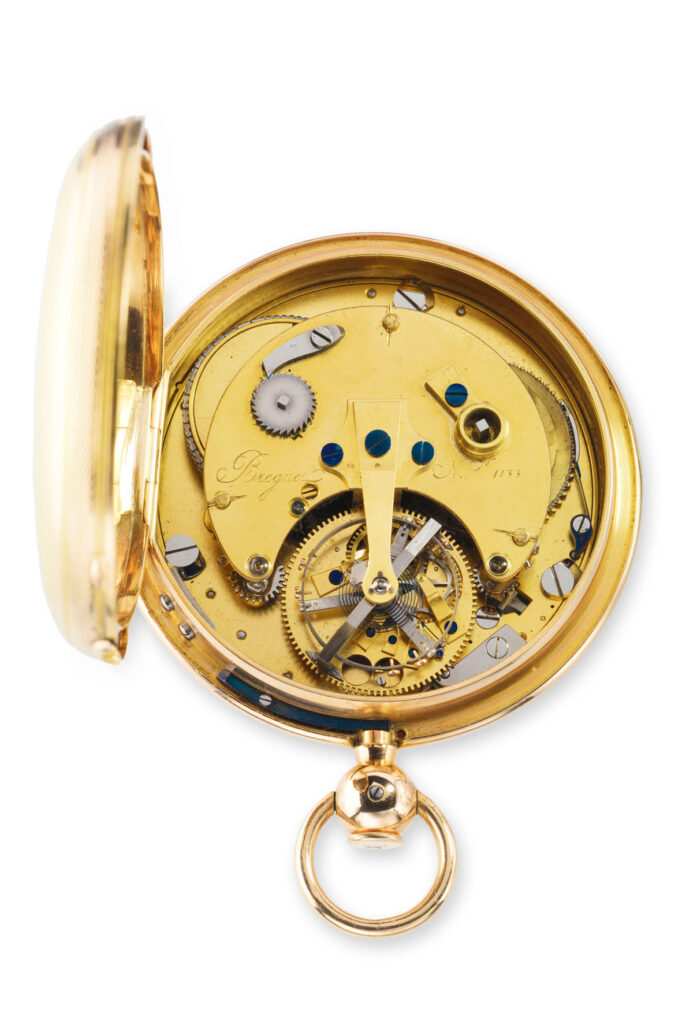A Tourbillon of emotions: The regulator invented by Breguet turn 220 years old
28 June 2021It is only right also for Watch Insanity to celebrate the genius of Abraham-Louis Breguet (1747-1823), because the master watchmaker from Neuchâtel fully embodied our tenets of originality, independence, quality and creativity. In the domains of arts, science, the industry – to be interpreted in its most transversal meaning as the production of useful objects for a large part of humanity – there are men who have left an indelible mark. And, right above them, we find the giants: they are the ones who had the strength to imagine and create something that in time became part of our universal heritage, and their name is indissolubly associated to a product with the strength to enter the collective imagination and, consequently, to the sector they were able to shape in their image and likeness.
Thomas Edison, for example, was the man who “enlightened the world” because he was the first entrepreneur who was able to apply the principles of mass production to the process of invention. If we think of combustion engines, we don’t associate them with their inventors – the Tuscans Barsanti and Matteucci – nor with the first people who developed them – Otto, Daimler and Maybach – but the name that immediately comes to mind is that of Henry Ford, for the legendary Ford T and its assembly line. And, of course, the electric car has one universal father: Elon Musk, the founder of Tesla (and other colossal businesses). That said, the first watchmaking giant was, without any doubt, Breguet himself. The reason is simple. In his days, he was the greatest inventor and entrepreneur, and his clients were among the most prominent men and women of the time. But the most incredible aspect of his story is that the vision that a man who lived over two hundred years ago had of watchmaking, a time when objects were exclusively handcrafted and people worked by candlelight, has remained practically unchanged today. Materials have improved tremendously through the improvement of knowledge and technology, but the design, in essence, has remained loyal to Breguet’s concept.
WHY THE “TOURBILLON REGULATOR”?
“With this invention,” wrote Breguet to the French Minister of the Interior when applying for the patent, “I have succeeded in cancelling by compensation the anomalies due to the two different positions of the center of gravity of the regulator’s movement, in distributing the friction on all parts of the circumference of this regulator’s pivots and of the holes in which they move, in order to make the lubrication of the parts subject to friction constant, despite the oils coagulating, and finally in reducing by a great deal other causes of error affecting the precision of the movement.”
At the time of the patent – obtained on June 26, 1801 – the meaning of the invention was related to its better precision compared to the normal already-existing systems. Hence the name “Tourbillon”, which for Breguet did not have today’s meaning of “violent rotation” but, as the in-depth note by the Maison Breguet on the anniversary’s occasion well explains, the term is conceptually inspired by that of the planetary system rotating around a single axis, exactly in the “Enlightenment” spirit, with the watch tending to be a cosmological miniaturization – a mechanical replica of the universe’s perfect pulse of life.
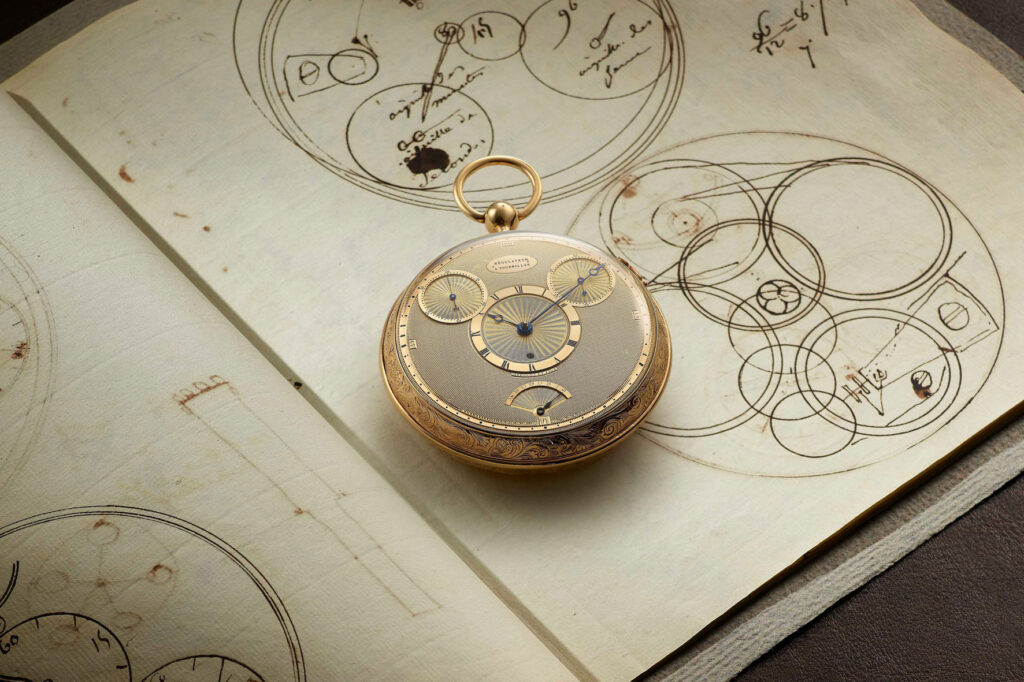
Tourbillon regulator, natural escapement, observation seconds, ordinary seconds,
power reserve, blued steel Breguet hands.
Case: gold, caseback engraved with coat of arms of Potocki family (Poland)
Dial: gold
Production dates: 05/07/1802 – 12/02/1809 – Breguet Museum collections
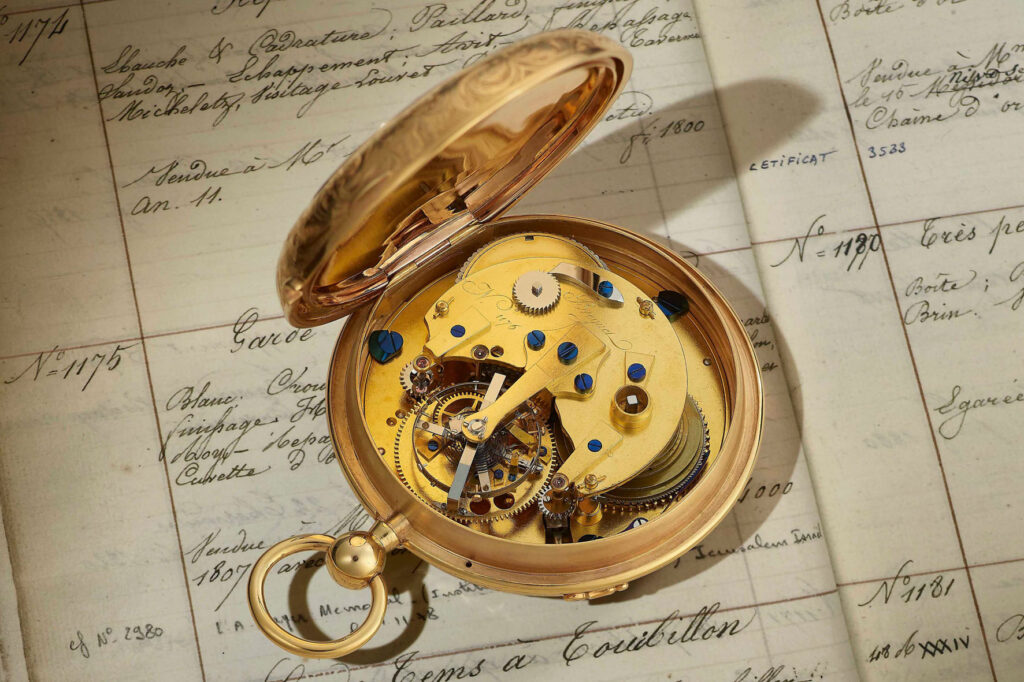
HOW THE TOURBILLON WORKS
It is well known by now that the tourbillon, since it doesn’t add any feature to the timepiece that holds it, cannot be defined as a complication. However, making a tourbillon in a workmanlike manner undoubtedly represents one of the most superb masteries of high-end mechanical watchmaking. While it is technically a rotating carriage that holds the balance, the spring, the lever and the escape-wheel. Usually – and this was also the case with Breguet’s original patent – the carriage (connected to the seconds wheel that drives it) completes a full revolution, thus 360 degrees, in one minute (and despite patent indications, over half of those made by Breguet himself made the rotation in 4-6 minutes). But regardless of the time required for a full revolution, the rotation is conceived to compensate for deviations due to gravity and ensure the greatest possible precision; especially in pocket watches (the only ones used in Breguet’s time), which most of the time remained in a vertical position inside a vest pocket: the force of gravity in that position clearly affected the accuracy of the movement.
AN INVENTION FROM THE ERA OF THE MONTGOLFIER BROTHERS
Today’s people do not immediately realize the exceptional work of a giant like Breguet. And, more specifically, of the incredible feat he accomplished back in his days by inventing the tourbillon: imagining it, making it and marketing it. And it’s worth going into detail in order to understand his absolute genius. The design phase began in 1783, the year in which the Montgolfier brothers made their first flight on a hot air balloon and Spain and Great Britain acknowledged the independence of the United States of America: two events that allow us to understand how different that world was from today’s. We also know from the Manufacture’s archives that between 1796 and 1829, Breguet and his collaborators produced 40 tourbillons, while another 9 pieces were never finished. In practice, from concept to marketing, he sold less than one piece per year – each one requiring between 5 and 10 years to make.
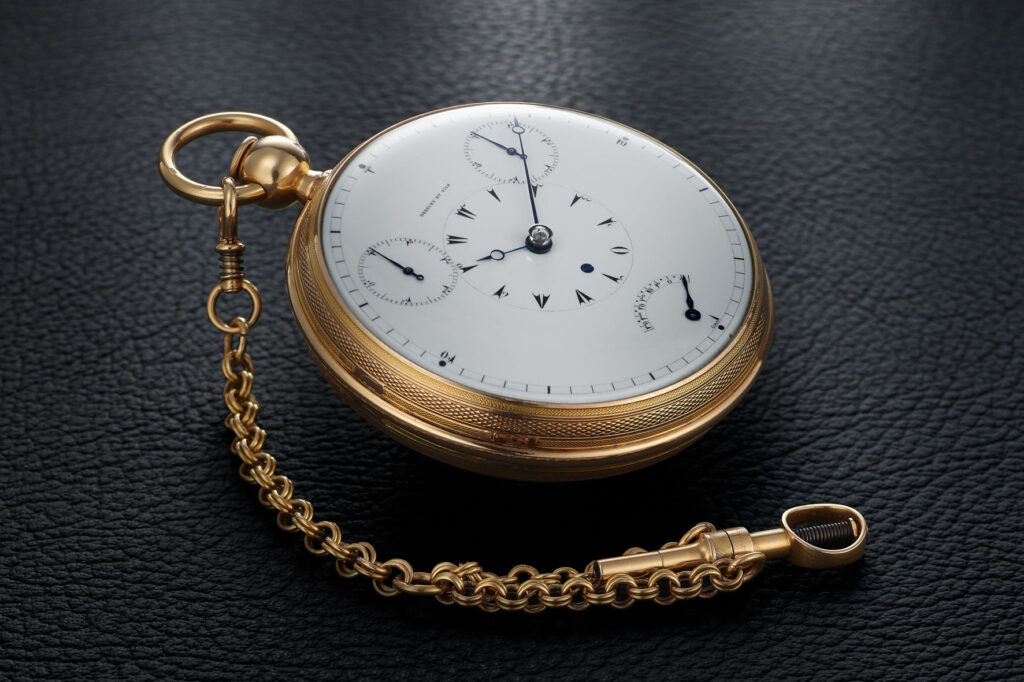
Tourbillon regulator, natural escapement, observation seconds,
ordinary seconds, power reserve, blued steel Breguet hands
Dial: enamel with Turkish numerals (replaced in 1841, the engine-turned original was in in gold)
Case: gold, sun engraved caseback
Production dates: 24/08/1802 – 09/06/1807 – Breguet Museum collections
After all, back then, the customers were not media celebrities but kings and aristocrats, or scientists, explorers, ship owners and navigators. Because the tourbillon, inevitably very expensive for its greater precision, was, for the time, the best possible instrument for navigation at sea and for calculating longitude.
AN INVENTION THAT TURNS 220 YEARS OLD AND IS NOW MORE IN VOGUE THAN EVER…
Another totally incredible aspect is that an invention that has come to celebrate its 220th anniversary, today, in a science-fiction world compared to that of 1801, is more in vogue than ever despite the fact (not secondary) that it is no longer of any use! Because today’s materials and lubricants have nullified the tourbillon’s added value of greater precision, which remains, however, an unequivocally sublime exercise in horological mastery, magically hypnotic to observe.
On the other hand, to be honest, the mechanical watch is no longer of any use either – smartwatches being way more useful – yet it too enjoys great health, fortunately for us enthusiasts, and claims admirers in every corner of the world.
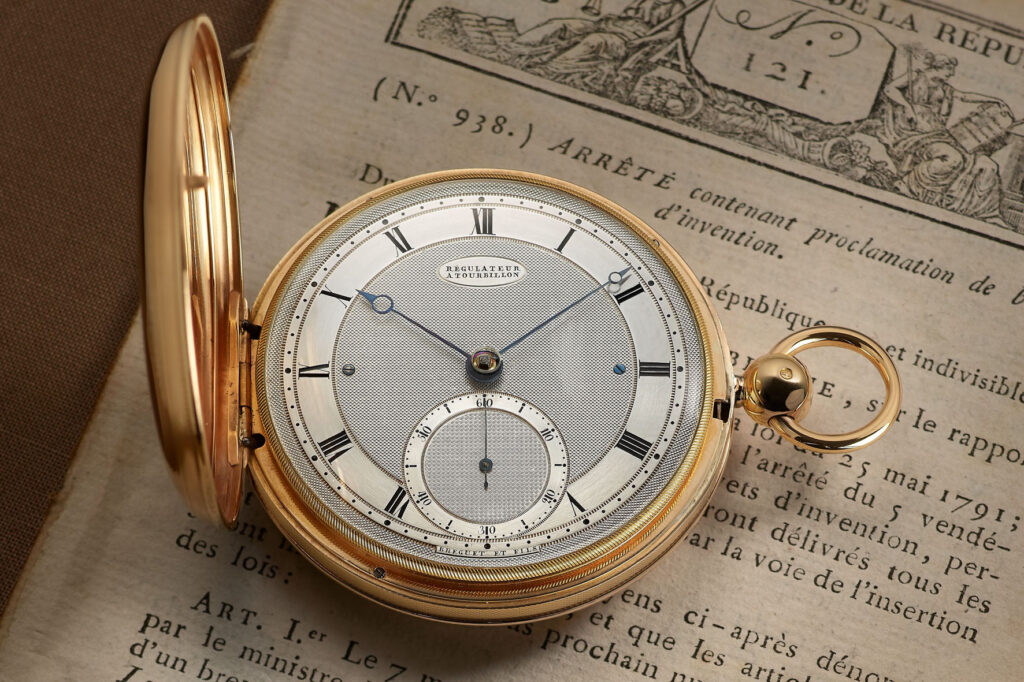
Tourbillon escapement, small seconds, blued steel Breguet hands
Case: hunting case in gold – Dial: engine-turned silver
Production dates: 26/10/1809 – 31/12/1812 – Breguet Museum collections
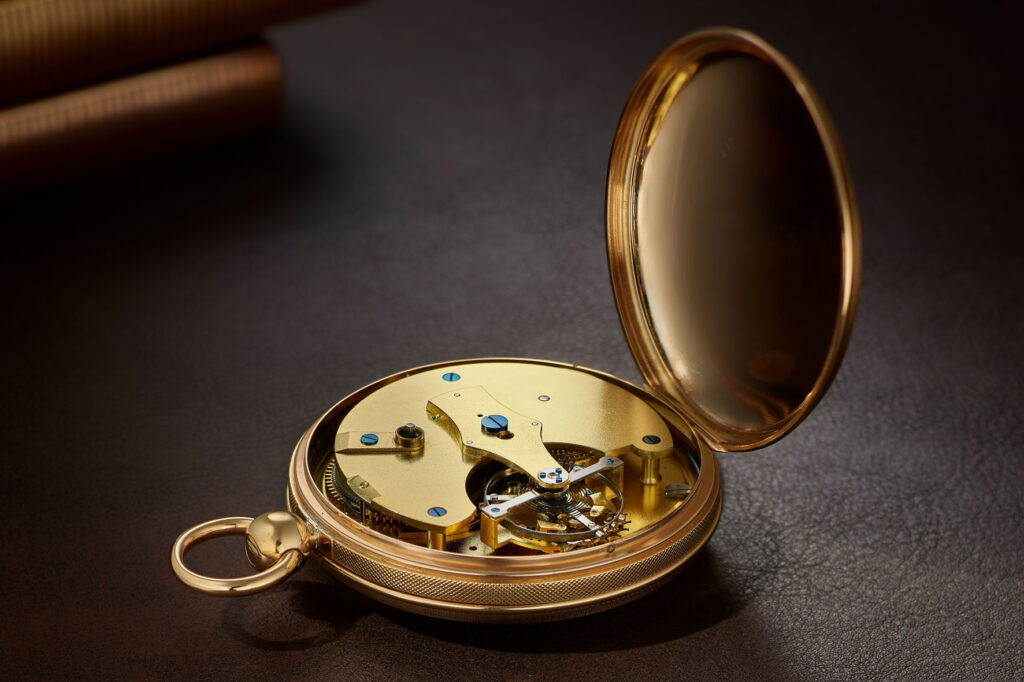
Returning to Breguet‘s invention, it must be said that it has always been the true essence of the manufacture of the same name. Of those forty tourbillons made by the master himself, a dozen are museum heritage. In fact, three are in the Breguet Museum, five are kept in the British Museum and other museums in England, and others are in Italy, Jerusalem and New York. Moreover, fifteen are in the hands of important and lucky private collectors. In total, about thirty specimens reached our days intact. But the heritage left by Abraham-Louis Breguet is far greater, so much so that the tourbillon, his trademark, is an exercise in style that has made famous at least a dozen high-end brands that owe much of their success to it. That’s because Breguet was a giant and as such his heritage has become universal. And now it is with great curiosity that we await from the House of Breguet superb news to properly celebrate its crown jewel!
By Michele Mengoli

